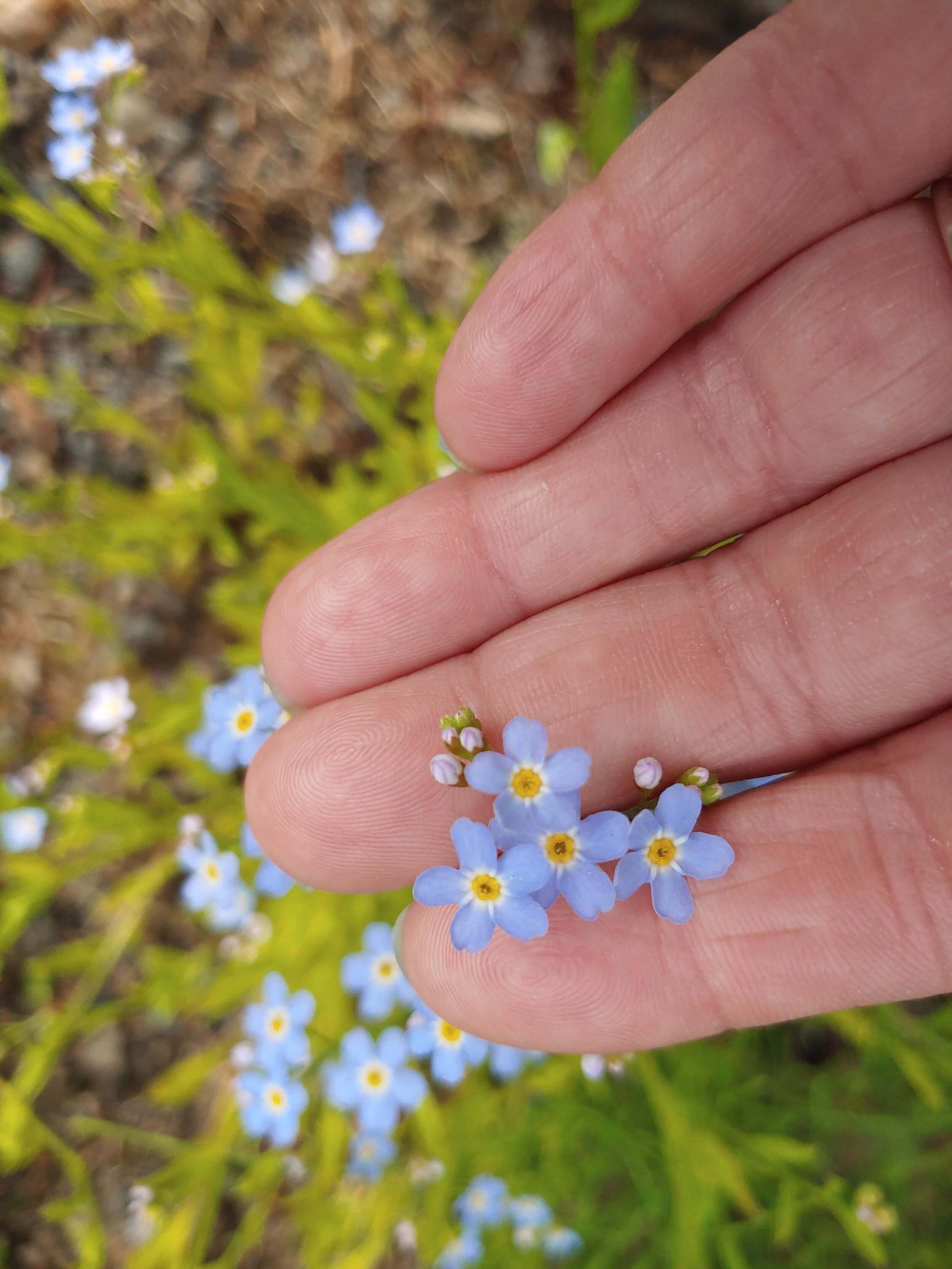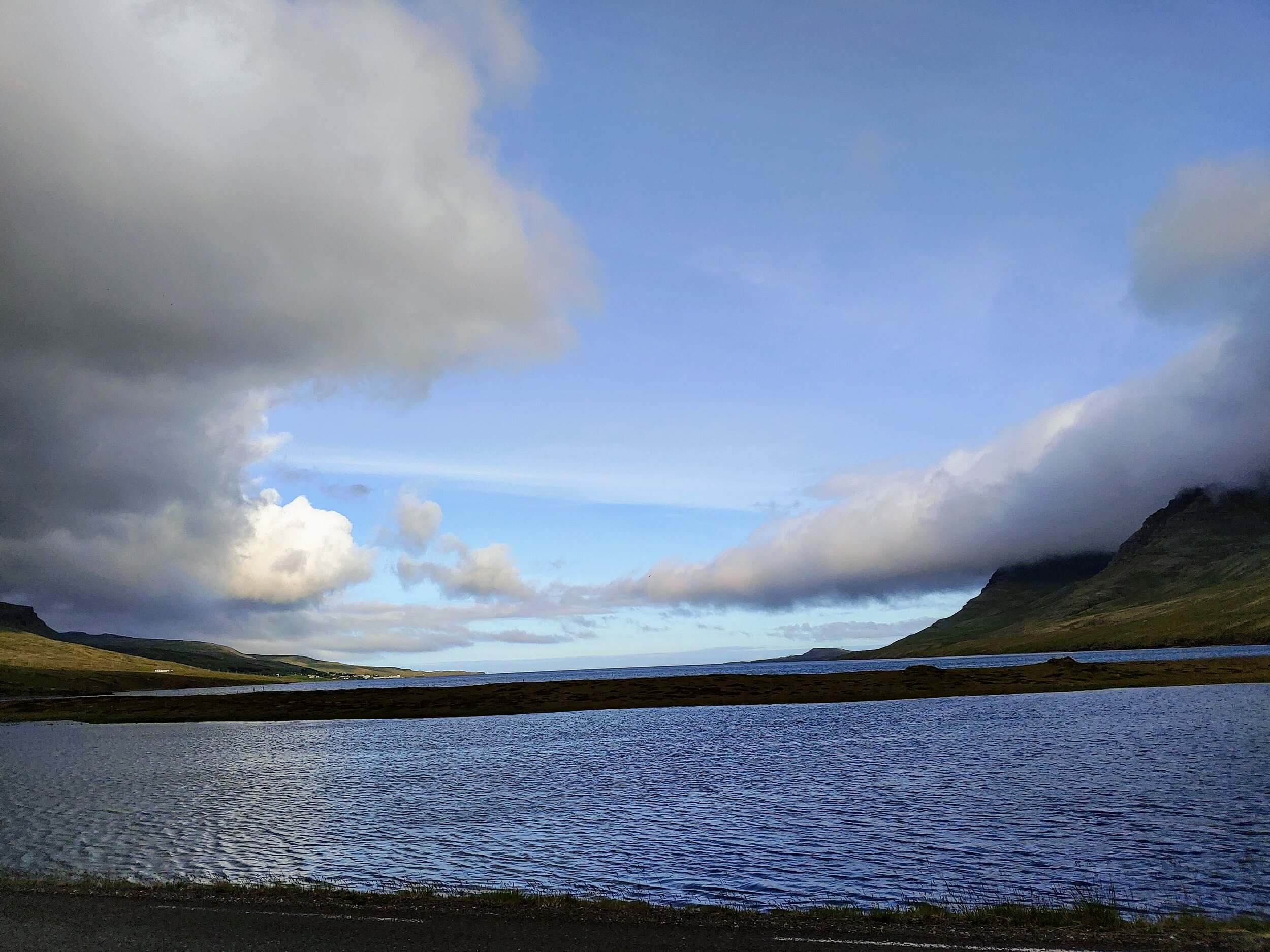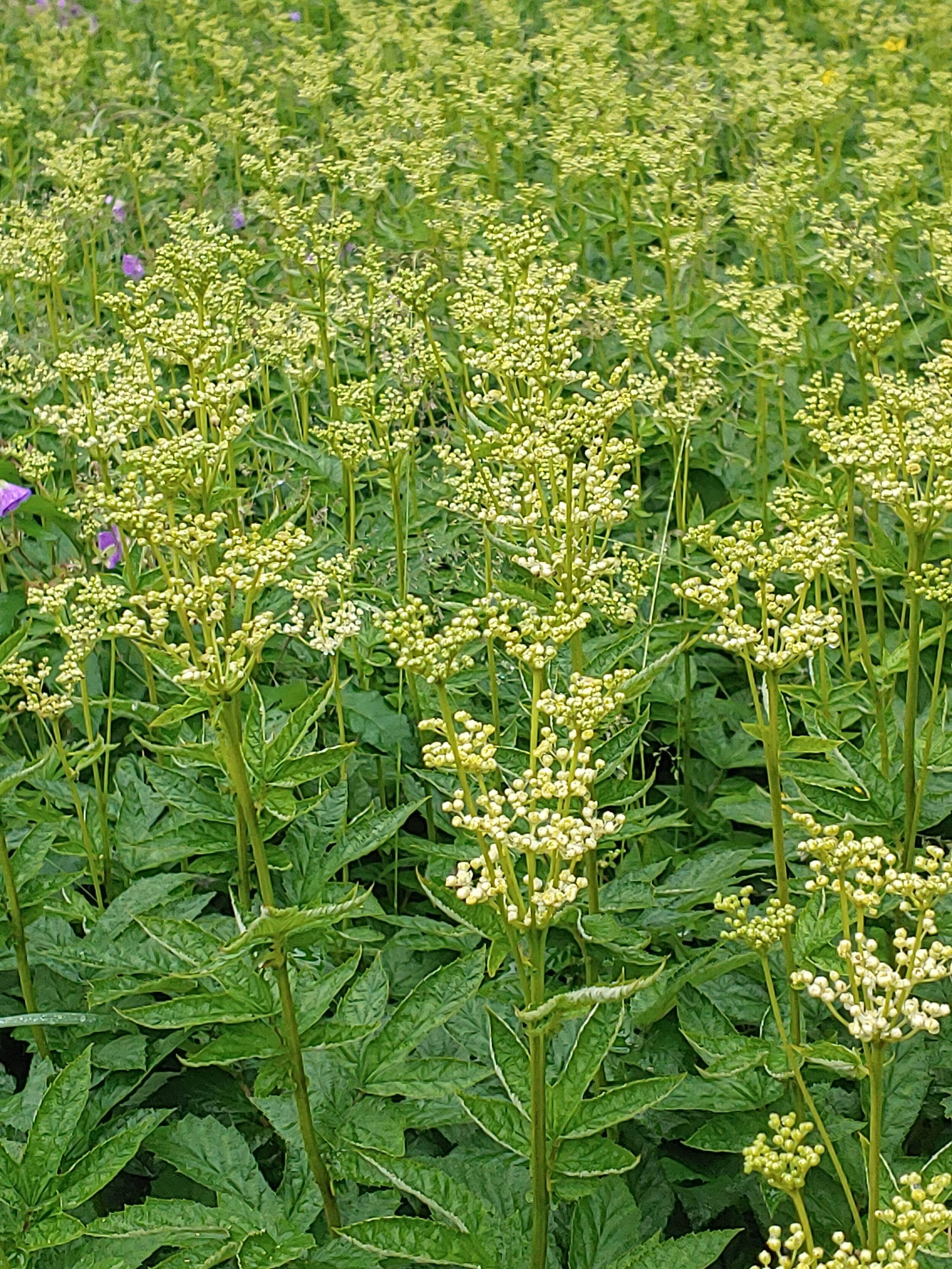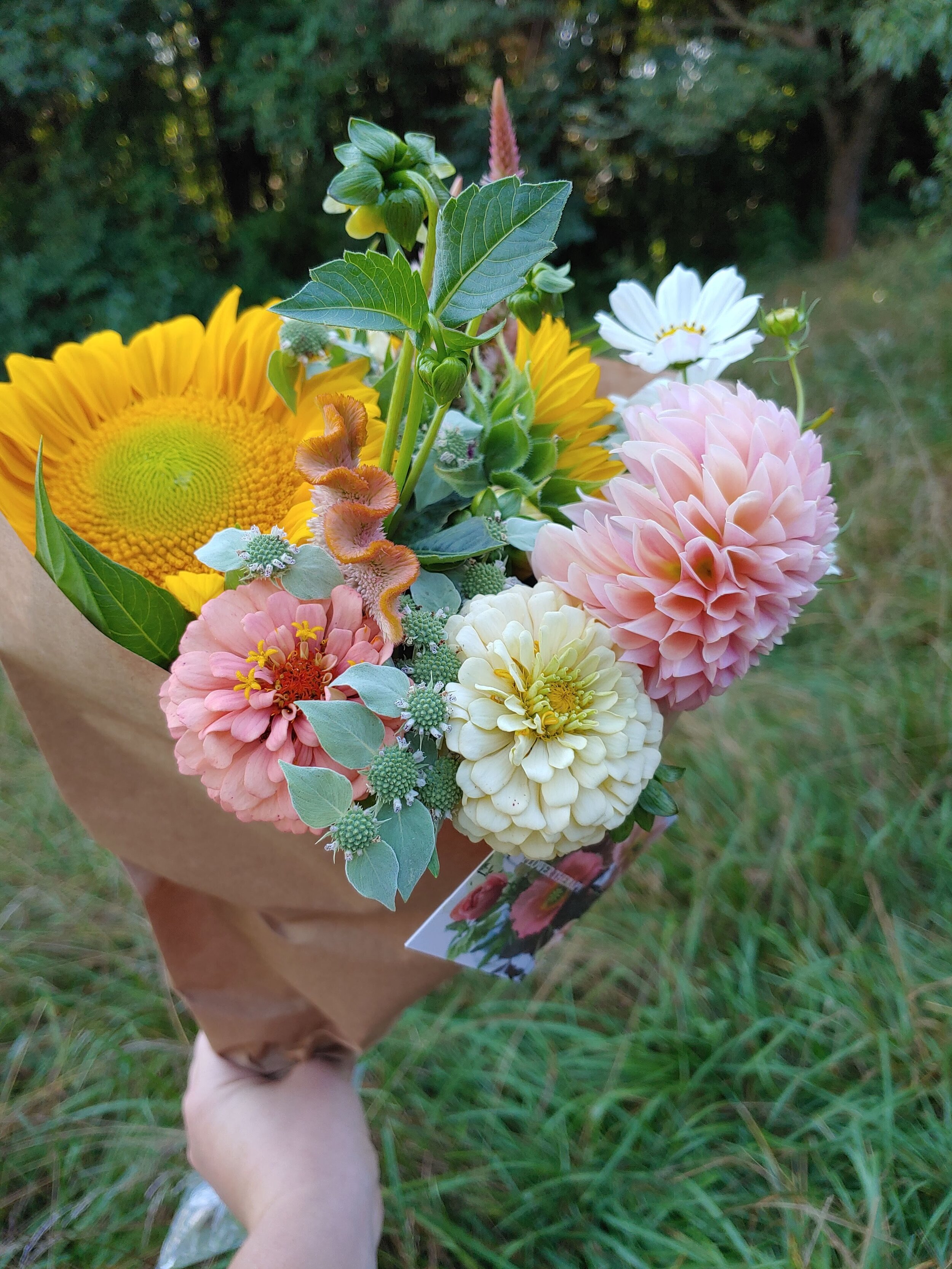Vegetables:
First rule of thumb when growing veggies— grow what you like to eat! And maybe try one new thing ;)
My top 5:
1. Tomatoes- I really like cherry tomatoes but large slicers are nice too. But I eat cherry tomatoes like candy during the summer. Sungold and Supersweet 100 are my favs- they produce heavily all summer long. They also start easy from seed or you can usually find plants of them. They are common varieties that are dependable! For large slicers, I like Cherokee Purple, Striped German, and Brandywine. Tomatoes and dahlias actually have a lot of similarities in their growth habits- both need staking, they are voracious feeders once in fruit or flower. They also like a good bit of water and good drainage. You can sow tomato seeds now or get plants in a few weeks. Plant mid- April in the Upstate of South Carolina area.
2. Peppers- I like growing my own peppers- always feels like a money saver to me. Beautiful sweet peppers can be so expensive in the store. I’m afraid I’m not that much help when it comes to hot peppers b/c I’ve never grown anything hotter than a jalapeño. But I love sweet peppers- California Wonder, Marconi, Golden Cal, and many others are great varieties. The purple Islander pepper is a good heavy producer. You can try from seed but they do take around 8-10 weeks before they are ready for transplant. I usually just buy plants b/c I seem to always miss the seeding date. Plant out after last frost. Stake when you plant them b/c they can fall over easily. Also something I notice every year- Peppers pause when it gets hot. If you plant early enough, you’ll get a nice flush and then not much of anything until fall. When it gets really hot mid summer, it’s hard for the plants to give continued growth so they slow down and this means less flower production so less fruit. But keep them watered and they’ll give you a nice flush in fall.
3. Cukes/Squash/Zucchini- I’m lumping all these together b/c they are the same plant family and have similar growth habits. You can direct seed or start transplants- either works. Squash and zucchini are ground dwellers while cukes love a trellis (there are a few zucchini types that will grow vertically so check your variety). Planting a few successions of these is good in our area b/c they are susceptible to squash vine borers. The SBV is an awful pest that bores into the stem and then chews it up on the inside and pushes out a sawdust looking matter and slowly kills off your plant. I like to plant these as early as I can (right after last frost) so that they get well established before the SBV comes around. Also rotate where you plant these in your garden if you get SVB b/c the borers overwinter in the soil. Good varieties- Cukes— Suyo Long (spiny but sweet), Squash: Yellow crookneck, Zuch: Fordhook or Green Bush.
4. Okra- You either love it or hate it. In my household, we are huge fried okra fans. So I always grow a nice crop of okra. Direct seeded or transplants- either works. Space at least 9-12” apart— they get big. I really like the purple okra- tall strong plants and really pretty. It turns green when cooked but I love the purple color. Variety: Burgundy
5. Beans- Fresh green beans take me back to my childhood. Hours spent picking in my grandparents garden before we were allowed to swim. I grow bush and pole types. Bush beans are grown close together 6-12” apart and will flush a big harvest and occasionally a second one. I usually rip mine out after 3-4 weeks of harvesting and plant something else. By that point the pole beans are ready (they take longer). I like rattlesnake for pole beans, bush: dragon tongue, contender, roma. Direct seed beans- no need to start ahead of time, too easy to just direct seed.
**Special mention of Sweet Corn:
I’m not including this in my top 5 b/c it does take a bit of room to grow. But I love some good sweet corn. The important thing to know is that corn is wind pollinated. This means you need to grow it in blocks of at least 4 rows wide and not one long row. You can do a 4x8’ section and still get a good crop. I like Silver Queen the best. It’s what my grandfather grew and you just can’t replace it- it’s the best!
Herbs:
You can’t have a veggie garden without a few herbs. You have to be cruel to be kind to herbs. The rougher you treat them, the more they thrive. I like basil, rosemary, oregano and thyme the best. Sometimes I’ll grow a cool season crop of cilantro and parsley but they don’t like our hot summers. The other 4 are champs in hot weather and all but basil are perennial here in zone 7b. Good drainage, average soil and just ignore them a bit and they will thrive.
Few resources for seeds:
Baker Creek Heirloom Seeds: www.rareseeds.com
Johnny’s Seeds- www.johnnyseeds.com
Renee’s Garden- www.reneeesgarden.com
Botanical Interests- www.botanicalinterests.com
We will also have most of this stuff in our online plant sale beginning Friday, March 19, 2021.
**Quick note- Due to the huge surge of new gardeners during the Covid-19 pandemic, order times are much longer at most seed shops.
Tags: vegetables, flowers, herbs
0 Likes Share
Dahlia Trial Results 2020 →
Comments (0)
Oldest First Oldest First Newest First Most Liked Least Liked
Preview POST COMMENT…








































